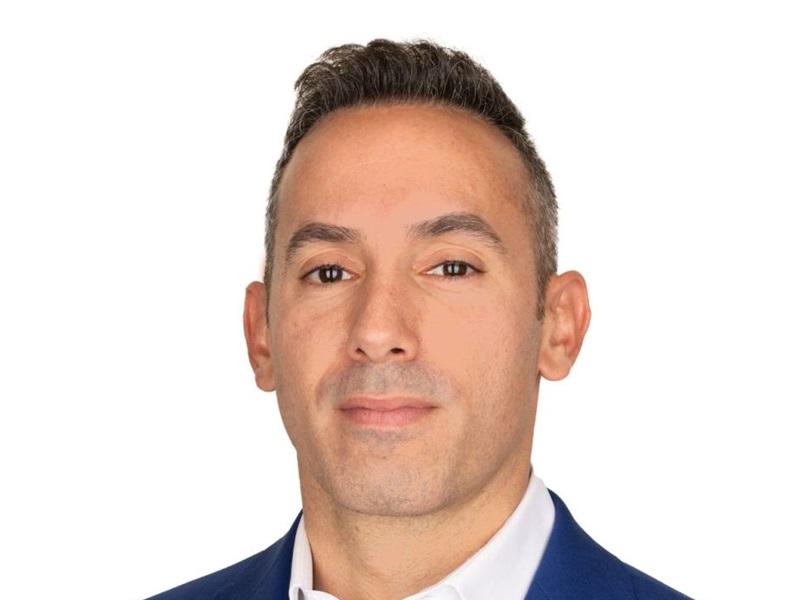
Adam Paul, president and CEO of First Capital REIT. (Image courtesy REALPAC)
A record amount of capital is available for commercial real estate investment, senior industry executives agreed during the closing panel at the virtual RealCapital conference on March 2.
The panelists provided insights on recent CRE performance and views on what to expect during the coming year, and the availability of capital was a central theme. In fact, First Capital REIT president and CEO Adam Paul doesn’t believe real estate should be considered an alternative asset class anymore as it’s become mainstream for many investors.
“I’ve never seen the wave of capital that exists today and I’ve never seen so many foreign investors speak about Canada in such a complimentary way,” Paul said. “Foreigners say we have gold at our feet like great job creation, great economic growth, great population growth, rule of law and tight real estate market supply constraints all over the place.
“We’re seeing it in multiple asset classes and it feels like that’s just getting started.”
Crestpoint Real Estate Investments Ltd. president Kevin Leon added that there’s a more dedicated commitment now than 15 years ago.
Fiera Real Estate head of Canadian real estate and fund manager Blair McCreadie said institutional investors are prepared to take much more risk with real estate than in years past.
Otéra Capital executive vice-president and head of strategy and risks Jamila Ladjimi and Desjardins Capital Markets managing director and co-head of investment banking Mark Edwards moderated the four-person panel.
Industrial real estate
Industrial real estate demand and rents have been increasing steadily.
“I’ve never seen such rapid rental growth in my career as we’ve seen in the last two or three years on the industrial side,” said Leon. “We’re all looking for that rental growth. The question is how much more of that is going to be sustainable.”
Fiera offers a variety of strategies, including an open-ended industrial fund, and more than half its portfolio is dedicated to industrial real estate. McCreadie said there has been “unheard of” rental rate growth based on supply and demand, and rents are expected to keep rising.
“They will reach a point where it’s having significant impact on the tenants and their ability to pay, so we’ll see how that plays out.”
Multiresidential real estate
Immigration is expected to hit new highs, so demand for rental apartments should keep increasing.
First Capital has a large multresidential development pipeline courtesy of retail properties that can be intensified. Paul said population and job growth in neighbourhoods are key long-term drivers for its development strategy and apartments will be a major part of its future growth to try to keep up with demand.
“We’ve seen tremendous cost inflation to build almost anything. We’ve fortunately seen great rental growth to keep pace with that. But if those two start to become mismatched, and we’re making multi-year investment decisions here, those are the things that make us a little more skittish.”
TD Asset Management’s balanced real estate portfolio has a multresidential weighting of approximately 23 per cent.
Managing director and head of global real estate investments Colin Lynch said it started making significant investments in the asset class in 2005 and now owns approximately 18,000 units. Another 2,000 purpose-built rental units and 4,000 condominium units are under construction.
McCreadie expects “huge growth” in the sector.
“The housing crisis in Canada and globally, quite honestly, is going to have an impact on where we invest,” he said, adding governments need to become more involved with providing affordable housing.
Crestpoint recently entered the multresidential sector and Leon is optimistic about its future. However, he said there has to be “less bureaucracy and less red tape” so supply can be added in a timely fashion.
Leon said Crestpoint has purchased multiresidential buildings from private landlords that spent very little on them, so capital expenditures and upgrades must be made. Crestpoint isn’t likely the only investor encountering this issue.
Office real estate
Leon said Crestpoint has a good office portfolio, though it includes some older buildings that require investment for retrofitting to make them more environmentally friendly and attractive to tenants.
The office component of TD Asset Management’s real estate portfolio is approximately 30 per cent. Lynch said some class-B office space will likely be repositioned to multiresidential or hotel uses.
Retail real estate

Kevin Leon, the president of Crestpoint Real Estate Investments Ltd. (Courtesy Crestpoint)
“Retail, in most of the sectors we have, which is open-air and food-anchored and pharmacy-anchored, has performed extraordinarily well during COVID,” said Leon.
Paul shared that view, as First Capital’s portfolio is heavily weighted to necessity-based, open-air retail in dense residential neighbourhoods in large markets across Canada.
Retail comprises about 18 per cent of TD Asset Management’s real estate portfolio, which emphasizes defensive necessity-based retailers as tenants.
“We also think well-located, dynamic shopping centres are relevant, especially ones that have a densification program around them,” said Lynch.
Other well-located but underperforming malls can still be valuable for repositioning into other asset types, Lynch noted.
Lynch believes there will be “a bit of an enthusiastic return to in-person shopping for a while” since it has been limited during the pandemic and people may have missed its social nature. He thinks e-commerce will continue to grow, but perhaps at a slower rate than the explosive gains over the past two years.
Other asset classes
McCreadie believes data centres and life sciences facilities can be growth areas.
TD Asset Management has some life sciences space in its office portfolio. Lynch sits on the board of a major hospital system and said more government money will be going to the sector, which makes it more appealing.
“It bridges universities and their research, bridges hospitals, and bridges venture capital and incubators,” said Lynch, who noted TD Asset Management has dedicated investments in life sciences in the U.S. and Europe.
Data centres and self-storage facilities are also of interest, but Lynch said there’s some internal debate as to whether they should be classified under real estate or infrastructure.
Development
“We have over 30 buildings under construction all across the country in every major city and in the two major asset classes, except for Alberta,” said McCreadie.
While First Capital continues to try to source and purchase properties that make sense for its growth strategy, Paul said it’s been a “tough acquisitions environment” for a long time so the REIT has heavily focused on its development program.
“It gives us the most control. It gives us visibility. We’ve got a very deep pipeline. It exceeds the size of the current built portfolio so it gives us a lot of flexibility to stagger. We still see attractive risk-adjusted returns in that program.”
Eighty-five per cent of First Capital’s business is in stable cash-flow income-producing assets, while the remainder is in development. Even with development representing just 15 per cent, Paul said it still poses a challenge for a publicly traded REIT.
“Public markets are not tailored very well to the development business,” he conceded. “That’s why the large developers are largely private.”
Crestpoint had largely focused on acquiring income-producing assets since its inception 11 years ago because it’s easier to buy and less intensive to manage than development.
The commercial real estate investment manager has bought almost $2 billion worth of assets in the last 13 months, but Leon said it’s becoming tougher to find appealing acquisition opportunities.
Crestpoint has therefore turned its attention to buying industrial development land. Leon said people were surprised when the firm bought industrial land in Ajax, east of Toronto, for $650,000 an acre three years ago. It was considered expensive at the time but turned out to be a wise investment.
Leon said firms can still make the numbers work in industrial development land today, but as construction costs increase and spreads narrow the risk may soon no longer be worth it. With income-producing industrial assets selling for $350 to $400 per square foot, though, he believes it’s still the lesser of two evils.
However, with real estate performing well and a wall of capital coming into the market looking to acquire — driving up asset prices due to increased competition — Leon believes investors and developers must accept lower returns or take larger risks.
Lynch said new developments don’t have deferred maintenance and have more appeal from an environmental, social and governance (ESG) standpoint. Capital values are being impacted if buildings aren’t perceived to be leading on the ESG side, he noted.











